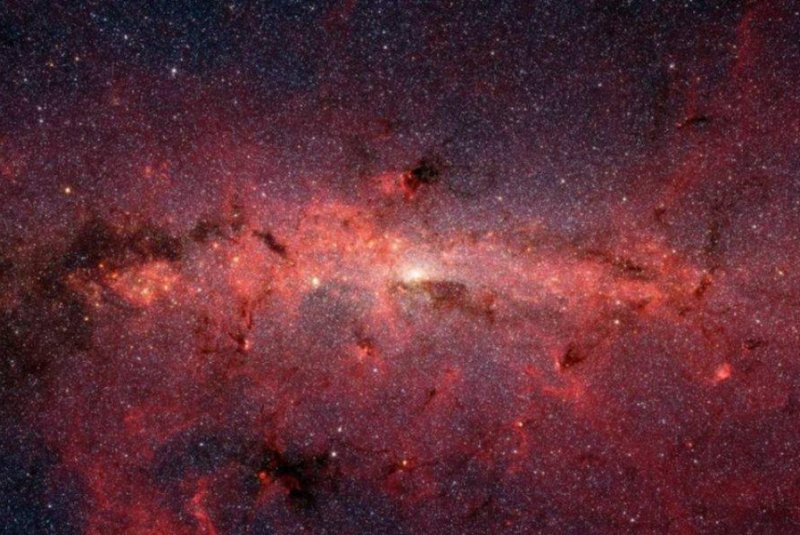According to a new study, some of the spectral lines emanating from the center of the universe can't be trusted. Photo by NASA/JPL-Caltech/Susan Stolovy (SSC/Caltech) et al.
Oct. 10 (UPI) -- Scientists in Sweden think the mysterious presence of exotic elements at the center of the Milky Way isn't a mystery at all, but an optical illusion.
The elements aren't actually there, astronomers from Lund University argue in a new paper, published this week in the Astrophysical Journal.
Last year, scientists reported observations of high levels of scandium near the black hole at the center of our galaxy. Emissions from three red giant stars revealed the surprising spectrographic signatures of three exotic elements, according to the original study.
But when scientists at Lund, in collaboration with researchers at UCLA, reexamined the spectral data, they found evidence of a cosmic magic trick.
Because red giant stars feature relatively low temperatures, electrons behave differently. In other words, the spectral signature of scandium changes depending on its temperature.
"These giant red stars have used up most of their hydrogen fuel and their temperatures are therefore only half of the sun's," Brian Thorsbro, a doctoral student in astronomy at Lund University, said in a news release.
Thorsbro and his research partners hope their findings will improve elemental mapping efforts.
Astronomers at Lund and UCLA are currently using the W. M. Keck Observatory, the world's largest telescope, located in Hawaii, to document the elements in stars throughout the center of the Milky Way.
"Our research collaboration is world-leading in terms of systematically mapping the elements contained in the huge central star cluster -- the star cluster that surrounds the black hole," said Nils Ryde, astronomer at Lund University.
To identify different elements, scientists study the spectral patterns of near-infrared light, which includes thermal radiation. Near-infrared light penetrates dust, allowing scientists to accurately measure it from several million light-years away. But near-infrared light is also affected by temperature, which can interfere with scientists' ability to accurately measure elemental concentrations.
Before astronomers can report abundances of scandium, authors of the new study argue researchers must consider alternative explanations for the unusual spectral lines.
"We argue that the strong lines are a property of the line formation process that currently escapes accurate theoretical modeling," researchers wrote in their paper.















